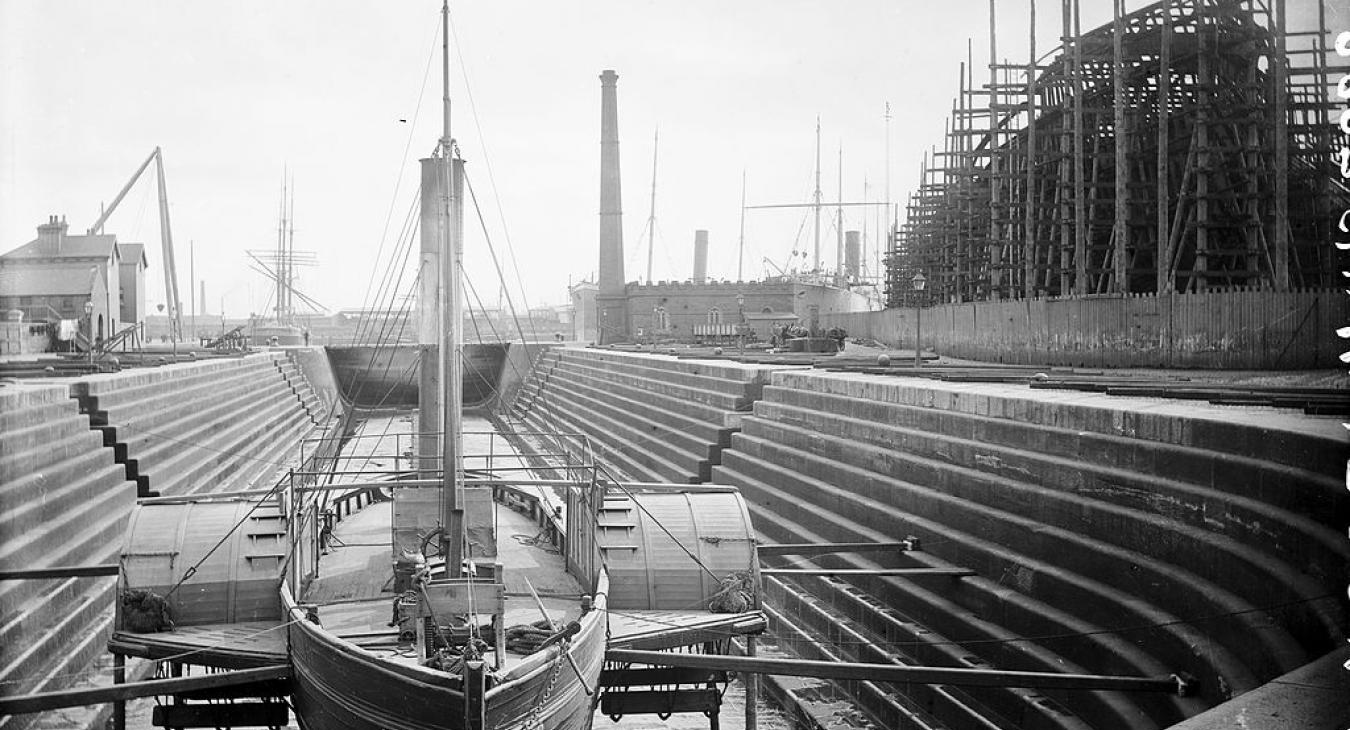
The Belfast Pogrom Sectarian violence had been a recurring problem in Belfast since the mid-nineteenth century and provided an unsettling undercurrent that disrupted the city's public life in almost every generation.
It had a particular impact on the development of the Labour movement, yet as recently as 1911, James Connolly the newly arrived Belfast secretary of the ITGWU and the longstanding local advocate of socialism in the city, William Walker of the ASCJ had agreed that sectarian violence was a thing of the past in an otherwise extremely bitter debate on whether the future of Irish Labour lay in aligning itself with Irish nationalism or integration in the British labour movement.
This misplaced confidence was soon exposed in the shipyard expulsions of 1912 that followed an attack on a Protestant Sunday School outing to Castledawson by members of the Ancient Order of Hibernians who were holding a local parade. It came only days after the Irish Trade Union Congress had voted to establish a political wing.
) The establishment of the Ulster Volunteer Force was not only a demonstration by Ulster Unionists of their willingness to resist Home Rule by physical force if necessary but a means of controlling and channelling loyalist working-class militancy. The establishment of the Irish Volunteers in the city, dominated by Irish Party and AOH leader Joe Devlin, had a similar effect in the Catholic ghettoes.
The outbreak of the First World War had a further calming effect in the short term with large numbers of working-class Protestants and Catholics, many of them UVF and IV members, joining the British Army. But this was of course merely deferring unfinished business. Even during Belfast Labour's heyday in 1919 and early 1920 there was an undercurrent of tension, manifested in the Belfast Engineering strike by the demand by some strikers for unemployed Protestant ex-servicemen to be employed, even if it meant dismissing Catholics recruited during the war, and the refusal to accept support from the ILP&TUC.
The Belfast pogroms erupted in 1920 as the War of Independence intensified in the South. It is sometimes blamed on Sir Edward Carson's speech on July 12th at Finaghy, where he attacked 'men who come forward posing as the friends of labour', whose real object was 'to mislead and bring disunity amongst our own people; and in the end, before we know where we are, we may find ourselves in the same bondage and slavery as is the rest of Ireland'.
However, the annual industrial holiday intervened and the more immediate trigger was the funeral of Lt Colonel G B Smyth, Divisional Commissioner of the RIC in Munster. He was shot dead by the IRA on July 17th in Cork after a speech he had made in Listowel urging RIC members to shoot more rebels.
Railway workers refused to transport his body home to Banbridge and rioting broke out after his funeral which quickly spread to Belfast. On July 21st the Belfast Protestant Association organised meetings at the Workman, Clark and Harland & Wolff shipyards that were followed by the violent expulsion of all Catholics and 'Rotten Prods', including the strike committee members from 1919.
The latter included James Baird, a Labour councillor, John Hanna a former master of an Orange Congress - Labour, gender and class in the struggle for Irish Independence 1917 – 1923 132 Lodge and the chairman of FEST, Charles McKay, who doubly qualified as a Catholic. The expulsions spread to the main engineering works and some linen mills. An estimated 10,000 workers were expelled of whom a quarter were 'Rotten Prods'.
Shipyard workers were subsequently attacked on their way home through Catholic areas and sectarian conflict erupted, which would leave almost 500 dead, over 2,000 seriously injured and 23,000 driven from their neighbourhoods.
The Dí¡il Eireann government retaliated by imposing a boycott on Belfast goods but this largely impacted on Catholic-owned companies as the major engineering industries exported very little to the South. Like the shipyard expulsions by Protestant militants, the Dail boycott, enforced by the IRA, further cemented the growing division between North and South.
When the Amalgamated Society of Carpenters and Joiners, the largest union in the yards tried to secure the reinstatement of its members, management said it was unable to comply or guarantee the safety of any men who did return. The union tried unsuccessfully to persuade its members to support its policies and called a strike in support of those expelled.
Only 600 members joined the pickets while 2,000 walked past. The pogrom coincided with the end of the post-war boom and unemployment in the shipyards soared to 28 per cent before the end of the year. In the post-mortem in August at the ILP&TUC conference, delegates heard graphic details of how 'men armed with sledge-hammers and other weapons swooped down on the Catholic workers in the shipyards, and did not even give them a chance for their lives', on July 21st. 'There was no ... no provocation, or no "rebel" cries. The gates were smashed down with sledges, the vests and shirts of those at work were torn open to see were the men wearing any Catholic emblems, and then woe betide the man who was.
One man was set upon, thrown into the dock, had to swim the Musgrave Channel, and having been pelted with rivets had to swim two or three miles, to emerge in streams of blood -and rush to the police office in a nude state." But beyond passing resolutions condemning these attacks, there was little the ILP&TUC could do. While money was collected to help the expelled workers and their families, they were actively discouraged from moving South and told to 'fight their corner'.
Padraig Yeates
